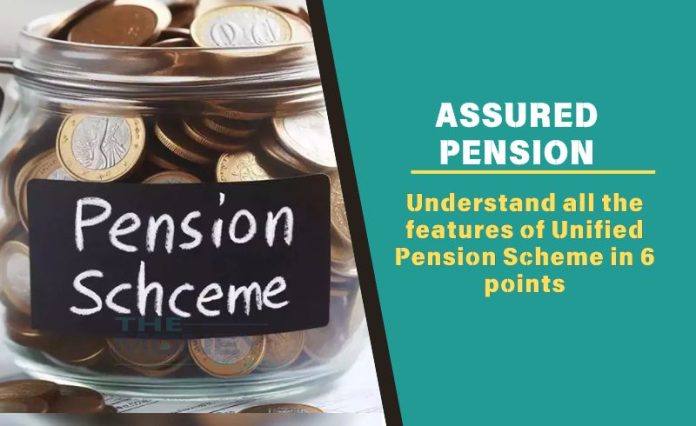The Narendra Modi government in power at the Centre on Saturday approved the Unified Pension Scheme (UPS) for central government employees, which may affect 23 lakh employees. The aim of this scheme is to provide financial security and stability to government employees after retirement .
Let us see what are the special features of UPS…
Assured Pension
Employees who have worked for at least 25 years will receive a fixed pension of 50 per cent of their average basic salary in the 12 months before retirement, i.e. half of the basic salary. For those who have worked for less than 25 years, their pension will be determined in proportion to their tenure, and the minimum service period for the scheme has been fixed at 10 years.
Assured Family Pension
If an employee unfortunately passes away, then the family pension will be given to the employee’s wife or husband. The amount of family pension will definitely be 60 percent of the pension that was being given to the employee before his death.
Assured Minimum Pension
Under UPS, pension will also be given to all those employees who have worked for a minimum of 10 years. A minimum pension of ₹10,000 per month is guaranteed for them on retirement.
Inflation Indexation
Fixed pension and fixed family pension under UPS have been put under inflation indexation. This adjustment will ensure that the pension amount keeps pace with inflation.
Dearness Relief
At present, like the serving employees, the retired employees under UPS will also be given dearness relief on the basis of All India Consumer Price Index (AICPI-IW) for industrial workers.
Lump Sum Payment on Superannuation
In addition to the gratuity amount paid to employees on retirement, every employee will also receive a lump sum payment on retirement. 10% of the employee’s last monthly salary (the sum of basic salary and dearness allowance received at the time of retirement) will be paid for every six months of service. This lump sum payment will not reduce the amount or quantum of the fixed pension.
In reference to UPS, Prime Minister Narendra Modi in a post on micro-blogging website X (formerly Twitter) said, “We are proud of all government employees who work hard for the progress of the country… Unified Pension Scheme (UPS) will ensure dignity and financial security of these employees… This step reflects our government’s commitment to their welfare and secure future…”
23 lakh employees will benefit…
UPS will immediately benefit 23 lakh central government employees. However, if state governments also give the option of this scheme to their employees, then this number can increase to 90 lakhs, and a large section of government employees across India will be able to benefit from it.
It is worth noting that this scheme of the Central Government has been announced after many non-BJP ruled states decided to return to the DA-linked Old Pension Scheme (OPS) and employee organizations in some states raised the demand for OPS.
The National Pension Scheme (NPS) has been implemented for all government employees, except the armed forces, who joined the Central Government on or after January 1, 2004. Most state and union territory governments have notified NPS for their new employees.
Under OPS, retiring government employees were given 50 percent of their last salary as monthly pension. This amount keeps increasing with the increase in inflation rate. However, OPS is not financially secure, as there is no contribution in it, and the burden on the government treasury keeps increasing.



